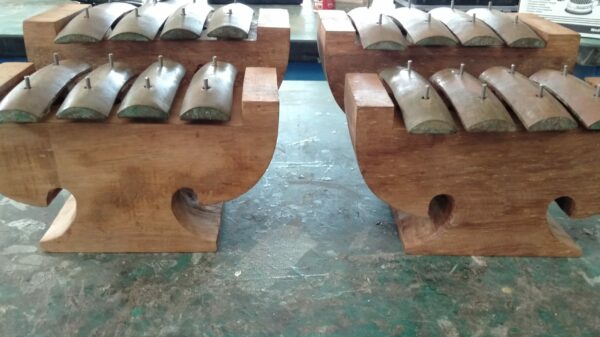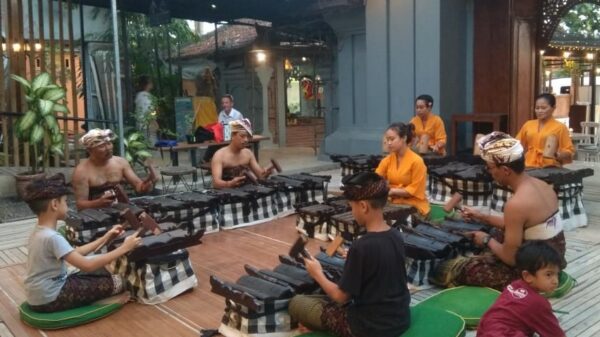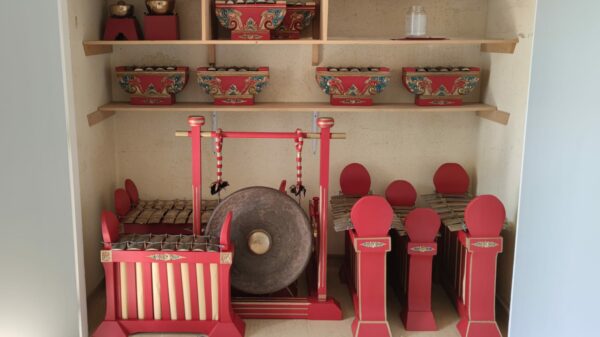Our Old-Fashioned Angklung set is characterised both by its age (estimated to be from the 1800s) as well as its old-fashioned instrumentation (hence the name: kuna = old fashioned). Uniquely the casings seemed to have been carved by different individuals of one community – as each motif and carving style is different – which is typical of the era before mass production of gamelan instruments in the 20th century.
The instruments were re-tuned by our founder Vaughan and augmented with a number of additional instruments with mostly bamboo instruments that were documented by Colin McPhee in the 1930s in east Balinese villages, including bamboo rattles called abunjing (aka Angklung kocok), cungklik, gerantang and various sizes of bronze cymbals. Vaughan is currently having a terompong beruk (a terompong with slab keys made from coconut wood known as uyung and hung over resonators crafted from dried coconut shells (beruk) which have been cut in half.
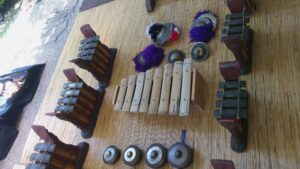
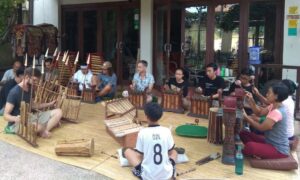
Currently this is the only place in the world where you can hear this type of ensemble in its entirety after being reconstructed in 2015, around 70 years since it was first documented.
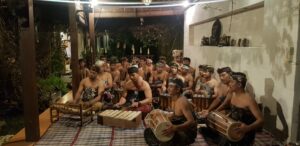
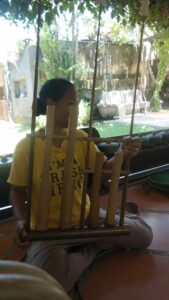
We have also made the first recording ever of this ensemble type. Listen to this set on these platforms:
Watch this set on our YouTube channel.

